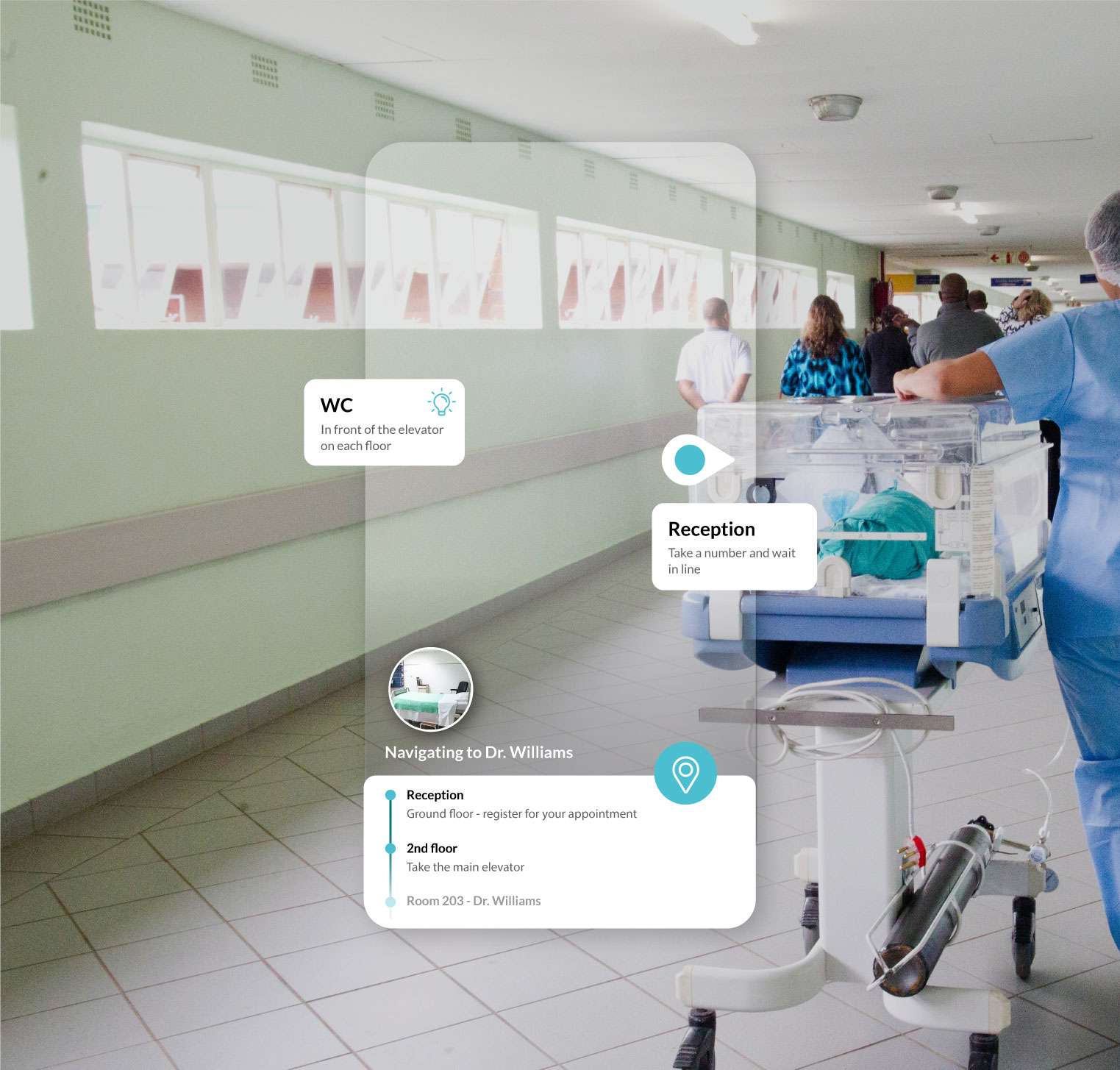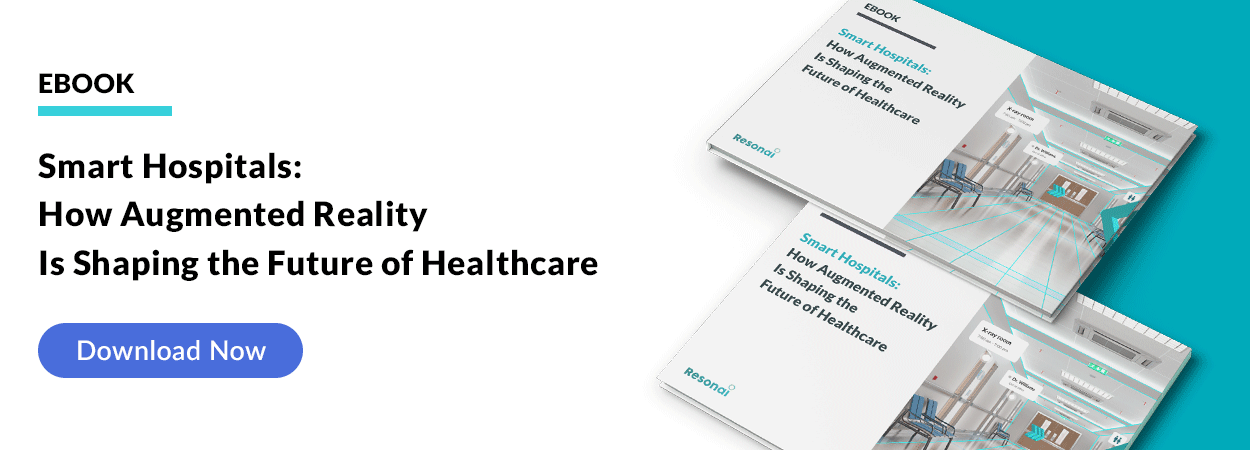How Augmented Reality Addresses Four of the Most Common Patient Complaints
Your hospital’s financial health depends on patient satisfaction. Learn how augmented reality, and Vera, can help.
April 19, 2021

Patient satisfaction has become an increasingly important factor in determining a medical facility’s financial well-being. Low scores on surveys like H-CAHPS or Press Ganey can impact Medicare reimbursements, and while the most common patient complaints are fairly manageable, the realities of resource limitations and staffing challenges often mean that many patient needs go unmet.
Thankfully, augmented reality technology has reached a point that many of these issues can be addressed without the need for additional overhead, ensuring healthcare facilities can deliver a high caliber of patient care that leads to better fiscal health. Here’s how solutions like the Vera platform can help.
Helping Patients Navigate Facilities
- Problem: Patients are in unfamiliar surroundings and need guidance to find important locations, even within their own room.
- Solution: Augmented reality lets patients self-navigate around the facility, and can demonstrate how to use items in their own room.
Once a patient is admitted, they have to spend a great deal of time trying to get comfortable in an unfamiliar environment. Something as simple as turning on the television can be frustrating, to say nothing of navigating to the correct wing of a sprawling medical facility. Augmented reality platforms that provide indoor wayfinding and navigation solutions, like Vera Concierge, empower patients to better understand how to interact with their surroundings and accomplish their goals within a facility. Whether patients are looking to pick up a snack in the cafeteria or find their way to an important medical appointment, augmented reality solutions can get them to their destination sooner and with less frustration.
Keeping Patient Care Information Updated
- Problem: Patients don’t know who is in charge of their care.
- Solution: Augmented reality patient care charts provide real-time updates.
Updating patient white boards is a small task that’s easy to forget in the grand scheme of managing an entire floor of patients, but don’t underestimate the impact it has. From the patient’s perspective, the white board puts a human face on the institution that they’re trusting with their health. When the white board doesn’t get updated, patients and their families feel like they’ve been forgotten or overlooked and begin to question the quality of care they’re receiving.
Augmented reality technologies that integrate into a facility’s operational infrastructures can provide healthcare institutions with scalable, centralized control over patient experiences. This makes it easy to keep patients informed about their care providers without the overhead of updating every room by hand. As shifts change, automated updates can be shared via mobile applications that allow patients to view their own virtual care charts in augmented reality.
Making Patients Partners In Their Care
- Problem: Patients become overwhelmed by information and don’t understand their treatment options.
- Solution: Augmented reality products can visualize and explain medical issues in simplified ways that can be easily understood.
Patients and their families want to understand every step of their care, but communicating with them in language they’ll understand can be challenging, especially when dealing with complex medical conditions. Healthcare providers do their best to convey treatment options and diagnostic procedures as clearly as possible so that patients feel confident about their decisions, but it’s not always perfect.
AR-powered analytics platforms support clinicians with data visualizations that provide the kind of transparency that puts patients at ease in a medium they’re comfortable with. Through integrations with patient-accessible AR mobile applications, hospital guests can view changes in their contextual medical data over time, affording them a better understanding of their care.
Keeping Families Informed
- Problem: Family members don’t receive information from medical staff at the same time, creating confusion and frustration.
- Solution: Augmented reality platforms provide centralized, contextually relevant information to patient families.
One of the biggest stressors of any hospital stay is the struggle to keep family members updated about any changes or discoveries. Nursing staff get caught up on phone calls or stopped in the hallway for questions they may not have the answers to. Patients may not be able to relay what they’ve been told or what’s being done, leaving their loved ones frustrated, confused, and worried.
Augmented reality applications like Vera Concierge can solve this by providing context-aware information, turning patient care facilities into centralized information hubs that keep everyone in the loop. Patient families get the information they want when they want it, giving them more control over their environment and treatment.
The Vera augmented reality platform enables healthcare facilities to deliver patient-centric solutions that let staff focus on providing superior care. The ultimate result is higher patient satisfaction, better survey results, and more reimbursements for medical facilities that equate to a strong return on investment. To learn more about how Vera can help, get in touch with Resonai today and set up a free demonstration.
Subscribe to Our Newsletter!
Read More
Patient Turnover: A Guide To Measurement & Optimization
When visiting a hospital, innumerable factors contribute to the overall quality of the patient...
5 Examples of Augmented Reality In Modern Healthcare Facilities
At one time, augmented reality (AR) was little more than science fiction. Today, it plays a major...
5 Ways Vera Delivers Compelling Visitor & Tenant Experiences
{% video_player "embed_player" overrideable=False, type='scriptV4', hide_playlist=True,...
